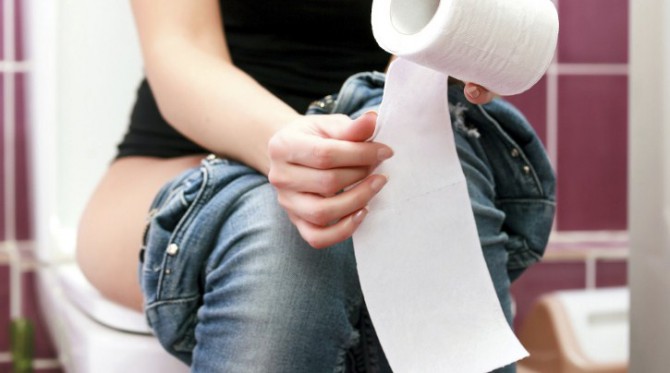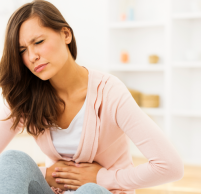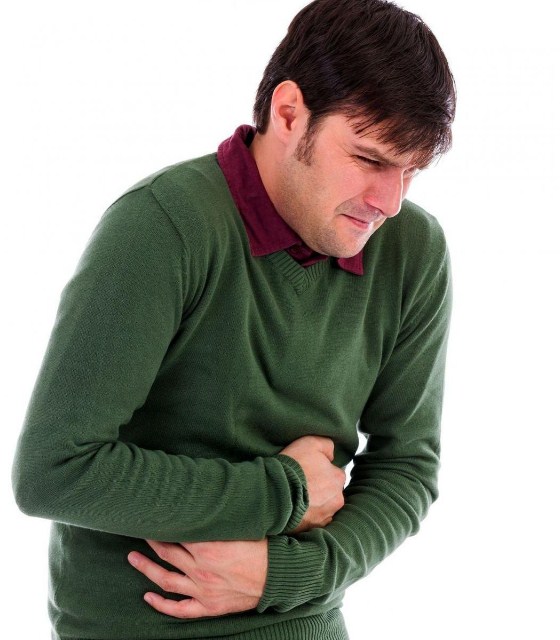Tingling in the stomach after eating. Causes of stabbing pain in the stomach. Where is pain localized under the influence of these factors?
Digestive tract– one of the body systems experiencing the greatest load. Accordingly, there are plenty of diseases affecting her organs. And almost every pathology is accompanied by pain. of various nature. To put accurate diagnosis and begin competent therapy, it is necessary to find out the reasons that provoked the appearance of the pain syndrome. And here, without examination by a specialist and diagnostic techniques not enough.
A stitch is a localized pain usually felt on the side, just below the ribs. This is sometimes accompanied by a stabbing pain in the shoulder joint. The pain can range from sharp or stabbing to mild cramping, aching or pulling. Sometimes people can exercise through pain, but usually the sufferer is forced to slow down or stop exercising.
The pain usually relieves within a few minutes of stopping exercise, but some people experience some residual soreness for a few days, especially after severe pain. Stitching appears to be more common in activities involving vigorous vertical, repetitive movement of the torso. Activities such as running and horse riding may be more prone to creating a stitch, however it can occur in any activity.
Causes of stabbing pain

Before starting the examination, it is necessary to determine exactly when the pain began, which gave the initial impetus - stressful situation or eating certain foods. It is necessary to establish where exactly the pain is localized by palpating the stomach in different body positions. Now about the most common factors, as a result of which colitis in the stomach:
Scientists are not sure of the exact cause of the stitch. For some time it has been believed that stitching is caused by decreased blood supply to the diaphragm, big muscle involved in breathing. It was believed that during exercise, blood was pulled away from the diaphragm and redirected to exercise the muscles in the limbs. This theory has now lost favor with scientists. Both the diaphragm and limb muscles have to work hard during exercise, so it is unlikely that insufficient blood flow will be sent to them.
Another popular theory is that the stitch is caused by organs pulling against the ligaments that connect the intestines to the diaphragm. Ligaments that support organs such as the stomach, spleen and liver are also attached to the diaphragm. Push during physical exercise can cause these organs to pull on the ligaments and create tension on the diaphragm.
- Problems with stool– constipation or diarrhea, often all negative reactions arise against the background of banal overeating.
- This could be an organ injury.
- Possible allergic reaction after eating a certain product.
- Acute stabbing pain in the stomach can be provoked by ulcerative pathology; discomfort occurs before eating and can develop accompanied by nausea and vomiting. Weight loss is noticeable.
- With gastritis, there is pain in the stomach while eating or after eating.
- The cause of paroxysmal stabbing severe pain may be duodenitis, it is possible pain shock.
- With polyps, the activity of the stomach stops, what besides discomfort provokes the development of nausea, and sometimes bleeding.
- The stomach also colitis with oncology of this organ, and the sensations are very sharp and very strong. In addition to pain, there is loss of appetite, internal bleeding indicates a decrease in hemoglobin levels.
- When exposed to infectious pathogens in addition to colic, stool upset and vomiting occur.
- Colitis or cholecystitis can cause pain.
- Stitching pain in the stomach can cause disruption of the functionality of organs located in abdominal cavity, the culprit may be pancreatitis or cardiovascular pathologies.

A later idea is that the stitch is caused by irritation parietal peritoneum. Two layers of membrane will align inner wall abdominal cavity. One layer covers the abdominal organs. The other layer is attached to the abdominal wall. The two layers are separated by a lubricating fluid that allows the two surfaces to move against each other without pain.
The parietal peritoneum is attached to a number of nerves. Stitching is thought to occur when there is friction between the abdominal contents and the parietal peritoneum. This friction may be caused by a distended stomach or decreased lubricating fluid. Eating and drinking alcohol inappropriately before leaving can aggravate the stitch by causing a full stomach or dehydration. Poor nutrition, insufficient warm-up and intense training may also be factors. A sudden change in biomechanics, such as an increase in stride length or frequency, can increase the risk of stitching by affecting how the torso moves.
Where is pain localized under the influence of these factors?

When considering pathologies important localization of unpleasant sensations takes place, together with the characteristics of pain, this indicator helps in making a preliminary diagnosis:
Necessary examinations and tests
Eating before exercise or drinking inappropriate foods and liquids seems to make the stitch worse. Fats with high content fats, and foods and liquids with high concentrations of sugar are most likely to cause problems. The likelihood of a stitch occurring can be reduced by two to four hours before training after big meal and choosing high carbohydrate options, with low content fats and moderate to low protein in pre-sale foods.
Why does pain occur?
During exercise, it is possible that a full stomach promotes stitching. Concentrated liquids such as soft drinks and cordials empty slowly from the stomach and are therefore likely to result in a full stomach. Water and sports drink empty faster and better. It is also preferable to use a frequency of drinking small amounts of fluid at regular intervals during exercise and then try to drink larger volumes at once.
- Acute gastritis or exacerbation chronic course The disease causes a stabbing pain in the pit of the stomach, in the center of the abdomen. At the same time, in the central zone pain syndrome can also cause pancreatitis in acute stage. Treatment is based on reducing the level of hydrochloric acid.
- If you experience stabbing pain under the rib on the right, one can assume the presence hepatic colic, in this case the reason is the stone blocking bile duct. Sometimes the influencing factor is impaired functionality and excessive contraction of the biliary tract. Antispasmodics and painkillers are a temporary measure to alleviate the condition.
- If the stomach hurts over the entire surface abdominal wall, one can assume intestinal colic. When joining pain nausea, turning into vomiting and fever, an urgent call to specialists is necessary.
- With appendicitis or inflamed ovary a painful feeling occurs when moving with right side in the lower abdomen. Self-medication in such cases is unacceptable; a qualified examination is required.
- Pain in the center of the stomach in addition to pancreatitis and gastritis, it can provoke bleeding in the duodenum.
Whatever the nature of the pain, no matter where it is localized, it is important to remember the main thing - the correct diagnosis is made by the attending physician and treatment regimens are developed on its basis.
Stitching can also be kept to a minimum by following a training schedule that gradually increases intensity and duration. A sudden increase in intensity is most likely causing the stitch. It's much better to start with easy level and grow slowly.
Sometimes the stitch becomes easier if you slow down and lower the intensity for a certain period. However, the most common way to relieve stitches is by bending forward while applying pressure to the affected area and breathing deeply. This can sometimes be done during exercise, but the pain usually improves more quickly when exercise stops. Another option is to lie down with your hips raised.
Stitching pain in the stomach can be the cause of many diseases. Pain in the gastric region is characterized by intensity, nature and cause of its occurrence. These symptoms are needed to make a diagnosis.
Does the stitch have a larger problem?
A seam is rarely a sign of more serious problems. However, any pain that is persistent and does not make it easier to stop should be investigated by a doctor. Happiness for Ottawa, Ontario-based artist Karina Bergmans creates the perfect belly or liver, pancreas or kidney.
Bergmans, she jokes, " obsession” with body parts, especially large-sized, three-dimensional organs, lovingly crafted from vinyl, velvet or any other covers that can be found among her sewing supplies. Despite his degree in psychology, Bergmans had not yet identified the origin of this obsession with organs and her desire to make them visible. But it is clear that Bergmans' gigantic, sometimes diseased organs help to demystify the body, its diseases and the world of medicine. Easy to imagine perfect stomach Bergmans as an instrument for children or as whimsical art in a hospital.
The intensity of pain varies depending on the disease. But, based on the intensity of stomach pain, it is quite difficult to judge the nature of the disease. As a rule, mild pain characterizes chronic gastritis, much less often stomach cancer or peptic ulcer. And since the pain is quite mild, patients often do not attach importance to this symptom, aggravating the disease.
These organs are accessible, educational and attractive, even damaged, including ulcers in the perfectly defined stomach. Bergmans' obsession with body parts was well on its way to full fruition. That's when she began showing off an evolving body of work called Organs, Organisms and Orifices, a collection of cuddly creatures and outlandish body parts, some of which are wearable. Once seen, it is impossible to forget Bergmans' cheerful "colon bag", a large wallet in the shape of a spiral intestine.
Strong stabbing pain in stomach can often be accompanied by duodenitis and peptic ulcer. In rare cases, the intensity is so high that the patient immediately consults a doctor. The most severe pain, which often cause painful shock in the patient, is pain caused by a perforated ulcer.
The nature of pain can describe not only some disease, but complications. An annoying, burning pain that occurs with diseases peptic ulcer or gastritis, this is a sign of solaritis. Dumb, It's a dull pain stands for chronic gastritis. Much less often, ulcerative symptoms manifest as sharp, spasmodic pain. A feeling of fullness and heaviness is characteristic of chronic gastritis. Acute cutting, stabbing pain in the stomach area often appears with exacerbation of duodenitis or with an ulcer duodenum.
Where is pain localized under the influence of these factors?
She still wears it in special cases. Some are "pillow letters" just for fun or for spelling words, many of which have anatomical connotations. The Banff studies turned into a body of work called Ligaments and Ligatures: twenty giant organs and three-dimensional texts, originally exhibited at the Guildhall Art Gallery in Ottawa during this summer. Bergmans hopes to expand his organ collection and keep them on tour throughout the country.
The causes of pain may be related to:
Physical activity and neuropsychiatric disorders- these are the most common reasons the occurrence of duodenal ulcers and duodenitis. The causes of stomach cancer remain unknown.
Stomach pain occurs after eating. If the pain is stabbing, then this indicates the presence chronic gastritis. If pain occurs up to an hour after eating, then this is typical for a stomach ulcer. After an hour and a half - in case of an ulcer of the pyloric canal. After one and a half to two hours in case of localization ulcerative defect. “Hungry” pain, or, in other words, night pain, is characteristic of a duodenal ulcer.
Causes of stabbing pain
We know this because the word "attack" is written into the text, seeping out like blood from a damaged heart. We all know someone, a family member, who may have had a heart attack,” explains Bergmans. But what does it look like? What is the physical manifestation of this?
The artist sees parallels between her process of creating organs and her work medical specialists, which sew together damaged parts of the body. In fact, Bergmans sees Ligaments and Ligations as a tribute to the medical profession: “We broke and they put us back together.”
In addition, the period of onset of pain depends on the quality of food taken. Thus:
- dairy products and boiled meat delay attacks of pain;
- canned food, vegetable marinades, rough plant foods, black bread accelerate the onset of pain;
- mashed potatoes, minced meat, liquid dairy products and other “soft” foods pacify the pain.





